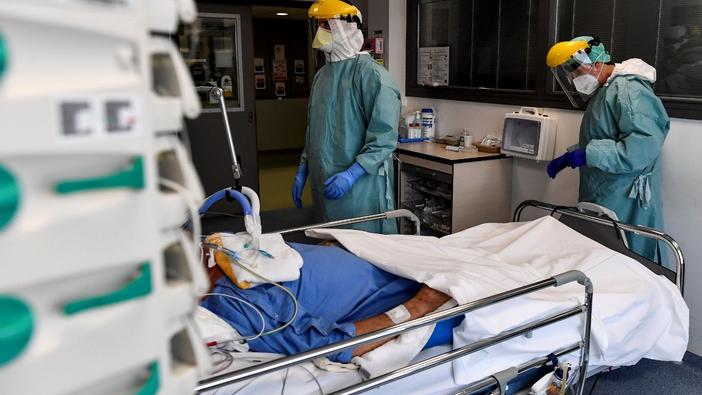The number of coronavirus patients in Belgium’s intensive care units has dropped below 1,000 according to the latest figures published by the Sciensano public health institute on Saturday.
Between 18 and 24 November, an average of 2,546.7 new people tested positive per day over the past week, which is a 36% decrease compared to the week before.
The total number of confirmed cases in Belgium since the beginning of the pandemic is 570,829. The total reflects all people in Belgium who have been infected, and includes confirmed active cases as well as patients who have since recovered, or died as a result of the virus.
Over the past two weeks, 396.7 infections were confirmed per 100,000 inhabitants, which is a 64% drop compared to the two weeks before.
Between 21 and 27 November, an average of 244.9 patients was admitted to hospital, down 29% from the week before.
In total, 4,213 coronavirus patients are currently admitted to hospital, or 182 fewer than yesterday.
Of the patients currently admitted, 998 are in intensive care, which is 36 less than the day before. A total of 637 patients are on a ventilator - 34 fewer than yesterday.
Related News
- Belgium reopens shops, extends other measures until mid-January
- New Covid-19 campaign tackles Belgians' sense of community
From 18 to 24 November, an average number of 143.9 deaths occurred per day, marking a 20.2% decrease compared to the week before.
The total number of deaths in the country since the beginning of the pandemic is currently 16,339 – 120 more than yesterday.
Since the start of the pandemic, a total of 5,833,380 tests have been carried out. Of those tests, an average of 28,636.3 were taken daily over the past week, with a positivity rate of 11.5%. That means that just over one in nine people who get tested receive a positive result.
The percentage went down by 6% compared to last week despite a 1% increase in testing. Since Monday, asymptomatic people can get tested for coronavirus again.
The testing strategy was temporarily adapted from 21 October as testing material was becoming scarce, testing centres saw too-long lines and laboratories were under high pressure.
The reproduction rate, finally, remains at 0.79. That rate (Rt) is the rate at which the virus spreads. As it remains below 1.0, it means that a person infected with coronavirus infects less than one other person on average.
Jason Spinks
The Brussels Times

